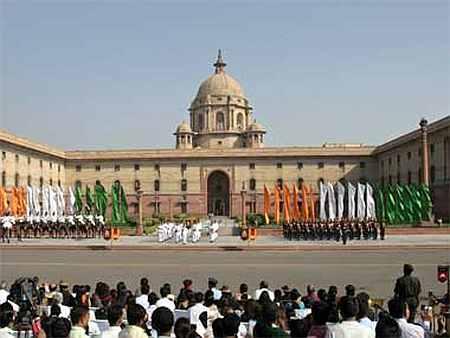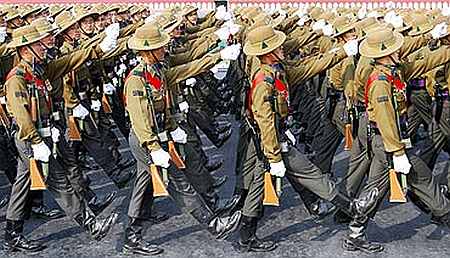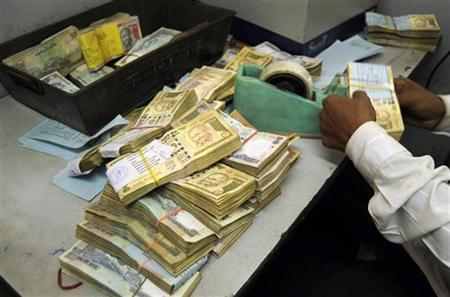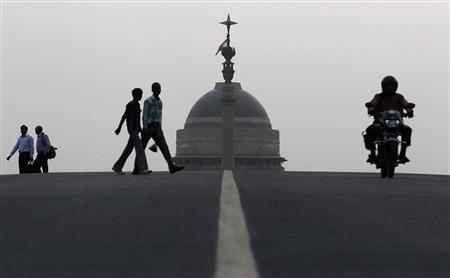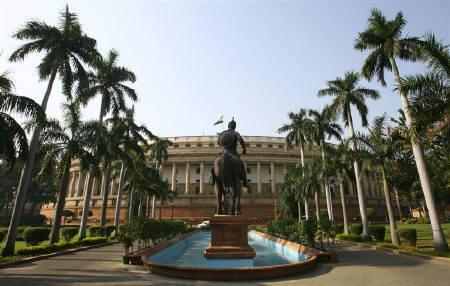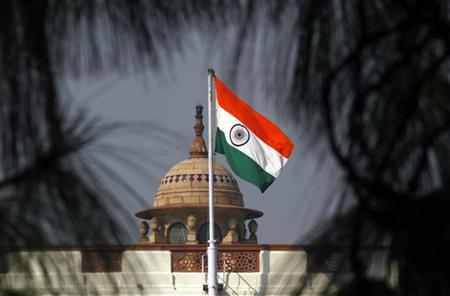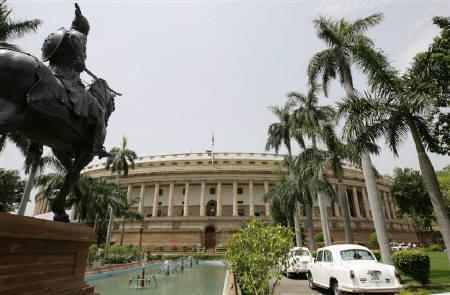 | « Back to article | Print this article |
How well do you know India's Finance Ministers?
Finance Ministers play a key role in shaping the country's economy.
So, how well do you know the Finance Ministers of India, who have contributed towards India's story? Take this quiz to know a little more about India's Finance Ministers:
Click NEXT to read more...
How well do you know India's Finance Ministers?
When was the first time Pranab Mukherjee took charge as India's Finance Minister?
1) 19752) 1991
3) 1982
The correct answer is 1982
Pranab Mukherjee's first stint as the Finance minister of India was during the Indira Gandhi government in 1982. He presented his first annual budget in 1982-83.
1982
Pranab Mukherjee's first stint as the Finance minister of India was during the Indira Gandhi government in 1982. He presented his first annual budget in 1982-83.
Click NEXT to read more...
How well do you know India's Finance Ministers?
Who was the Finance Minister during the Emergency?
1) Morarji Desai2) C Subramaniam
3) Y B Chavan
The correct answer is C Subramaniam
C Subramaniam had the unique distinction of serving as minister under Pt. Jawaharlal Nehru, Lal Bahadur Shastri and Indira Gandhi. CS, as he was popularly known, is best-remembered as the man who provided political leadership to the Green Revolution. CS presented the budgets between 1975-76 and 1976-77.
C Subramaniam
C Subramaniam had the unique distinction of serving as minister under Pt. Jawaharlal Nehru, Lal Bahadur Shastri and Indira Gandhi. CS, as he was popularly known, is best-remembered as the man who provided political leadership to the Green Revolution. CS presented the budgets between 1975-76 and 1976-77.
Click NEXT to read more...
How well do you know India's Finance Ministers?
Which Finance Minister earlier served as an officer in the Indian Army?
1) Jaswant Singh2) Yashwant Sinha
3) P Chidambaram
The correct answer is Jaswant Singh
Jaswant Singh was an officer in the Indian Army in the 1960s and is an alumnus of Mayo College and the National Defence Academy (India), Khadakwasla. He served as Finance minister in the short-lived government of Atal Bihari Vajpayee.
Jaswant Singh
Jaswant Singh was an officer in the Indian Army in the 1960s and is an alumnus of Mayo College and the National Defence Academy (India), Khadakwasla. He served as Finance minister in the short-lived government of Atal Bihari Vajpayee.
Click NEXT to read more...
How well do you know India's Finance Ministers?
Who was the first Finance Minister of independent India?
1) T T Krishnamachari2) R K Shanmukhan Chetty
3) Jawaharlal Nehru
The correct answer is R K Shanmukhan Chetty
Sir Ramasamy Chetty Kandasamy Shanmukham Chetty KCIE was an Indian lawyer, economist and politician who served as independent India's first finance minister from 1947 to 1949.
R K Shanmukhan Chetty
Sir Ramasamy Chetty Kandasamy Shanmukham Chetty KCIE was an Indian lawyer, economist and politician who served as independent India's first finance minister from 1947 to 1949.
Click NEXT to read more...
How well do you know India's Finance Ministers?
Which two Indian Finance Ministers have presented five budgets in a row?
1) Yashwant Sinha / Manmohan Singh2) Pranab Mukherjee/ P Chidambaram
3) VP Singh / Yashwant Sinha
The correct answer is Yashwant Sinha / Manmohan Singh
The first time he took over the office of the finance minister, Yashwant Sinha's government was pulled down before he could present a proper Budget and instead had to present an interim budget for 1991-92. He was appointed Union finance minister for the second time in 1998, when BJP was voted to power. In the election held in May 1991, the Congress returned to power and Manmohan Singh became the finance minister. He presented the final budget for 1991-92 in July 1991. This was the first occasion when the interim and final budgets were presented by two ministers of two different political parties.
Yashwant Sinha / Manmohan Singh
The first time he took over the office of the finance minister, Yashwant Sinha's government was pulled down before he could present a proper Budget and instead had to present an interim budget for 1991-92. He was appointed Union finance minister for the second time in 1998, when BJP was voted to power. In the election held in May 1991, the Congress returned to power and Manmohan Singh became the finance minister. He presented the final budget for 1991-92 in July 1991. This was the first occasion when the interim and final budgets were presented by two ministers of two different political parties.
Click NEXT to read more...
How well do you know India's Finance Ministers?
Which Finance Minister went on to become the President of India?
1) Sarvepalli Radhakrishnan2) Giani Zail Singh
3) R Venkataraman
The correct answer is R Venkataraman
R Venkataraman was India's finance minister from 1980-82 in the Cabinet of Mrs Indira Gandhi. He served as President from 1987-1992.
R Venkataraman
R Venkataraman was India's finance minister from 1980-82 in the Cabinet of Mrs Indira Gandhi. He served as President from 1987-1992.
Click NEXT to read more...
How well do you know India's Finance Ministers?
Which Indian Finance Minister presented the Union Budget maximum number of times?
1) Pranab Mukherjee
2) Morarji Desai
3) Dr Manmohan Singh
The correct answer is Morarji Desai
Morarji Desai was the finance minister of India from 1959-64, 1967-70 and for the third time between 1977 and 1979. During his stint as FM, Morarji raised large revenues and curbed wasteful expenditure. He brought about strict discipline in the ministry.
Morarji Desai
Morarji Desai was the finance minister of India from 1959-64, 1967-70 and for the third time between 1977 and 1979. During his stint as FM, Morarji raised large revenues and curbed wasteful expenditure. He brought about strict discipline in the ministry.
Click NEXT to read more...
How well do you know India's Finance Ministers?
Which of these Finance Ministers later went on to become the Prime Ministers of India?
1) VP Singh2) Sachindra Chaudhuri
3) Madhu Dandavate
The correct answer is VP Singh
Vishwanath Pratap Singh was the seventh Prime Minister of India. Singh held office for slightly less than a year, from 2 December 1989 to 10 November 1990.
VP Singh
Vishwanath Pratap Singh was the seventh Prime Minister of India. Singh held office for slightly less than a year, from 2 December 1989 to 10 November 1990.
Click NEXT to read more...
How well do you know India's Finance Ministers?
She was India's only woman Finance Minister...
1) Vasundhara Raje Scindia2) Brinda Karat
3) Indira Gandhi
The correct answer is Indira Gandhi
Indira Gandhi held the finance portfolio from 1970 to 1971 while she was still the prime minister. Her tenure as PM was from 1966 to 1977 and again from 1980 to 1984.
Indira Gandhi
Indira Gandhi held the finance portfolio from 1970 to 1971 while she was still the prime minister. Her tenure as PM was from 1966 to 1977 and again from 1980 to 1984.
Click NEXT to read more...
How well do you know India's Finance Ministers?
Which Indian Finance Minister changed the budget timings for the first time in 1999-2000?
1) Yashwant Sinha2) Jaswant Singh
3) Dr Manmohan Singh
The correct answer is Yashwant Sinha
Yashwant Sinha was the finance minister until July 1, 2002, when he exchanged jobs with foreign minister Jaswant Singh. Sinha, during his tenure, was forced to roll back some of his government's major policy initiatives for which he was much criticised. Still, Sinha is widely credited for pushing through several major reform measures that put the Indian economy on a firm growth trajectory.
Yashwant Sinha
Yashwant Sinha was the finance minister until July 1, 2002, when he exchanged jobs with foreign minister Jaswant Singh. Sinha, during his tenure, was forced to roll back some of his government's major policy initiatives for which he was much criticised. Still, Sinha is widely credited for pushing through several major reform measures that put the Indian economy on a firm growth trajectory.
Your score is: 0 out of 10
